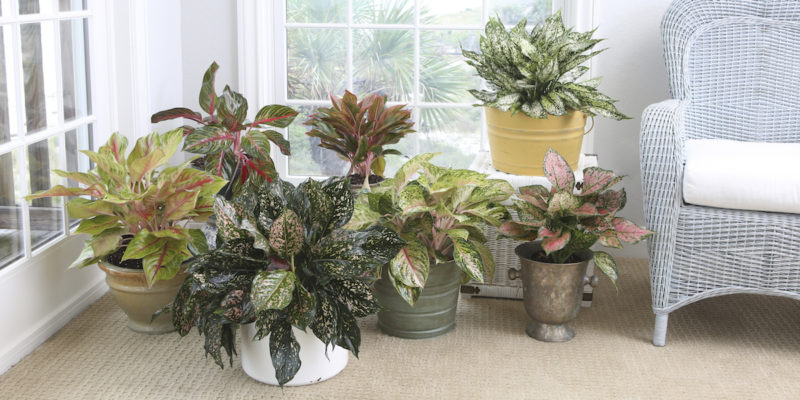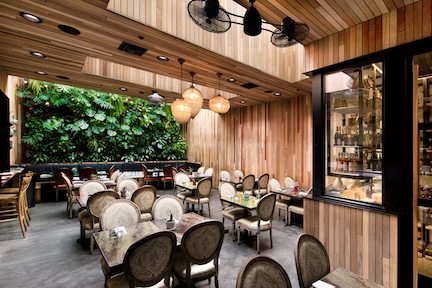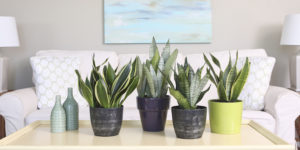
The Ultimate Comeback
Click here to see a .pdf version of this article.
You’re going to sell houseplants this year. Or, you should. The affluent segment of Generation Y, those ages 24 to 38, has the largest current and potential spending for luxury items. And being 90 million strong, it’s a market that we all know deserves our attention.
The millennial generation has been slower to settle down than previous generations. Many of them have opted to travel the world before buying a home or starting a family. Many others simply can’t afford the initial money down to buy a house. But all of them can afford houseplants, and that is becoming a financially feasible entryway to domesticity. Last year, 30 percent of American households purchased a houseplant and 31 percent of those purchases were made by millennial consumers.
HOUSEPLANT APPEAL
Since many rental agreements don’t allow pets, houseplants allow millennials to have a go at caring for something. They add personality to their rented spaces without the risk of losing their deposits. Towering cacti and easy-to-care-for philodendrons provide a greenspace in a living area that has no outdoor space. And for a generation obsessed with health and well-being, they’re aware that greenery is proven to boost mental health and improve air quality. And, let’s face it — plants make for cooler Instagram posts.
“Tending to a plant gives millennials a chance to take a break from their screens and connect with something tangible in the ‘real world’,” Catherine Cottney, global trends manager at the forecasting agency Mintel told the Independent. “Although not quite as cuddly, plants offer a relationship of sorts, as well as a sense of achievement, as sustained care and attention can help seedlings transform into bigger blooms.”
A PINTEREST-WORTHY TREND
The digital proof is there that this is a trend that is going to remain strong for years to come. In Pinterest’s Top 100 Trends for 2018, they list “Patterned Plants,” which is up 533 percent from the previous year. It’s a page that is covered in beautiful photos of variegated and textured houseplants like prayer plants, philodendrons, ficus and sansevieria.
Other more traditional greenscaping plants like the fiddle-leaf fig, have become the “it” plant for the design world, according to Justin Hancock, digital marketing manager at Costa Farms. Flip through any catalog from West Elm or Crate & Barrel and you’ll find this interior staple from page to page. It has a primal look with its large, glossy leaves that makes a statement in any room (or picture). The same can be said for the resurgence of the staghorn fern, split-leaf philodendron or snake plants.
And the fun part of selling foliage, according to Hancock, is that you can use the same assortment of plants for entry level gardeners as you can to market to connoisseurs and passionate gardeners. Plants like sansevieria, ferns and pothos are such diehard easy plants for consumers who are intimidated by their black thumbs, but the variety in variegations, colors and patterns make these same genera appealing to the savviest plant collectors.
SELL WHERE THEY SHOP
Millennials like living with the world at their fingertips. Urban areas are having a resurgence of economic energy and vitality. For the first time since the 1920s, growth in U.S. cities is outpacing the growth outside of them. They’re living in mixed-use communities — high rises on top of restaurants and storefronts. They prefer subways to driveways. They walk, they Über, they Bird.
Each month, we read articles in the trade magazines and newsletters about how to get millennials into garden centers and box stores. The challenge isn’t getting the millennials into today’s box stores or garden centers; rather it’s getting our products to the millennials through the channels where they’re tuned in. The traditional retailers are set up for the traditional gardeners, but we must ask the growers of this audience if they’ve considered all possible outlets for their finished consumer goods.
At Pigment, a trendy gift shop in the North Park neighborhood of San Diego, plants were used to soften an otherwise more industrial space. The matriarch of their collection was the huge fig tree that reaches up in to the rafters. Now it towers over succulents, hanging baskets, tillandsia displays and other smaller specimens. You can cruise through and admire their architecture or role your sleeves up and get creative at the Plant Lab, their in-store terrarium bar. As the terrarium craze hit, they initially offered workshops. In time, they wanted customers to be able to build any time they wanted, and the Plant Lab was born. Like Charlie in the Chocolate Factory, they wanted it to feel like a wonderland. Colored sands, mosses and rocks line the walls in a rainbow of color engaging adults and kids alike. It’s a go-to for gifting as customers can DIY or order up from one of our associates.
Hancock also adds that foliage gives us new opportunities to cross merchandise plants with other consumer products, and not just limited to garden center environments. When we sell these as décor or home health items for air purification, stress reduction or to fashion more creative spaces, it gives us endless opportunities to the other products they can be merchandised alongside.
The bottom line is that each generation changes — and so does every industry as it desires to stay relevant. Future consumers will always be in the market for plants, but as an industry we need to work at adapting our products to their aspirations, rather than trying to force them into our previous, traditional channels.

The Patio Group of restaurants is a trendy chain appealing to younger, affluent San Diego diners. The company’s CEO, Gina Champion-Cain wanted to create a welcoming environment that guests could gather together with family and friends to Relax, Enjoy, Share. She longed for a pet-friendly restaurant with great food and a thoughtful wine and cocktail program that felt like a large outdoor patio for guests to come and stay awhile. The green walls help bring the feeling of the outdoors indoors!

Sansevieria are offered in a myriad number of patterns, appealing to many plant collectors. However, the die-hard durability of these plants make them great choices for beginners or tough locations indoors.

Pigment (pictured at left), a very hip boutique retailer in San Diego’s North Park neighborhood, began using plants to soften their overall interior, but ended up becoming the most popular houseplant retailer in the city with everything from floor accents to hanging baskets, to their very popular terrarium “Plant Lab.”
Categories to Carry:
Super Chic Foliage: Go high end here. Both on the plants and the container. People are buying these plants for style and drama to complete the look of their room. You’re not trying to compete on a price point of plants, but rather against the perfect rug or pieces of art. People are purchasing these as an investment into their style, so you should offer the right selection and packaging to demand top dollar. Look at how the high style furniture retailers are showcasing foliage in their shoots. The plants are big and in clean, contemporary containers that will fit the modern consumer’s décor.
Top picks to have:
- Ficus lyrata: The fiddle-leaf fig is the “it” plant right now for decorators. With the large, leathery leaves, it adds drama to any room’s corner.
- Dracena warneckii ‘Lemon Lime’: Many different variegated forms have compact rosettes of foliage that add a starburst effect in the home.
- Sansevieria: Definitely the diehard of the group, this is the plant that no one should manage to kill. The upright habit will contrast against other plants in your collection and the various variegations available will add splashes of color.
- Ficus decora Variegated: Décor is in the name. These giant shiny leaves come in spectacular colors and add brightness to the collection.
- Zamioculcas zamiifolia: The perfect plant for the brown thumb gardener, this indestructible houseplant takes months and months of neglect and low light, while still looking amazing.








 Video Library
Video Library 

















